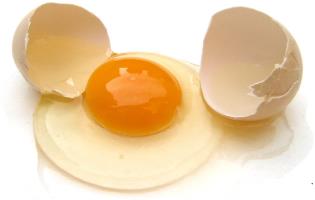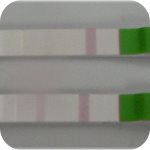
What is Cervical Mucus?
Cervical mucus is a fluid produced by glands in the cervix (the narrow passage at the neck of the uterus, bordering with the vagina). It can either help sperm or act as a barrier to them depending on how watery or how thick and sticky it is. This constancy of cervical mucus changes during the menstrual cycle and can be a very effective method of predicting fertility.
What is the Purpose of Cervical Mucus?
Cervical mucus has two main roles. During your fertile window as the mucus becomes more watery, it provides a nutrient rich fluid which is easy for the sperm to swim through on their passage through the uterus and into the Fallopian tubes. The nutrients within the fluid nourish the sperm, thus extending their life and enabling them to survive for up to 5 days within the reproductive tract.
Outside of this time, the cervical mucus acts as a protective mechanism for the uterus. It forms a sticky plug which keeps the cervix closed and protects the uterus from any infections.
How Does Cervical Mucus Change During The Cycle?
Cervical mucus changes throughout your cycle, as it correlates with your blood oestrogen levels.
In the first half of your cycle (known as the follicular phase), the cervical mucus is initially scant. It then increases in amount and has a sticky consistency, which then changes to a creamy discharge.
As you reach ovulation, the fluid becomes more watery, and just before ovulation the cervical mucus is stretchy and clear, and is said to resemble raw egg white. At this time, some women find that the mucus has a slightly sweet odour to it.
Following ovulation in the second half of your cycle (the luteal phase), the cervical mucus reduces in amount and becomes drier as the oestrogen levels fall.
How Can I Use Cervical Mucus Changes To Monitor My Fertility?
Because the amount and consistency of your cervical mucus changes according to the oestrogen levels in your blood, it is a very useful sign that can tell you when you are about to ovulate.
The change to a more stretchy, clear cervical mucus indicates that ovulation is due to occur within the next few days. This is one of the signs that can therefore be used to indicate when your fertile window is, and when it is best to try and time sex.
| Stage in Cycle | Description | Fertility |
|---|---|---|
| Follicular Phase | Creamy Like Lotion Milky Scant | Not Fertile |
| Ovulation | Egg White Watery Stretchy Slippery Clear | Most Fertile |
| Luteal Phase | Reducing in Amount Sticky Clumpy Pasty Drier | Least Fertile |
How Can I Identify My Cervical Mucus?
There are various ways in which you can identify your cervical mucus, with no one method being particularly better than another. It does involve checking your cervical mucus on at least a daily basis, and being aware of any changes which are occurring.
The ways to identify your cervical mucus involve either by looking at the discharge on your underwear or panty liner, or after wiping using toilet paper, or by using your fingers to scoop out some mucus. If you use your fingers, it is good practice to ensure that you have thoroughly washed your hands beforehand to prevent any infections developing.
When monitoring your cervical mucus, you are looking at the colour, consistency and amount of fluid that is present. Remember, it is the “raw egg white” cervical mucus that is a sign of your fertile window and suggestive of imminent ovulation.
It is useful to get into the practice of checking your cervical mucus at least daily, although some women advocate checking every time that they use the toilet. However, do be aware that it can be difficult to distinguish between fertile cervical mucus and arousal fluid or semen, and therefore it is better not to monitor shortly after sex.
Your cervical mucus can vary throughout the day, as well as throughout the cycle. Therefore if you have identified two different types of cervical mucus that day, it is advised to document the most fertile type found during that day.
It is recommended that you use your cervical mucus signs as one of the several fertility signs in order to allow you to get a more fuller picture of your cycle and your fertile window. This can be done through a process known as charting. For more information on this, check out the section: Fertility Charting
How Can I Make Cervical Mucus Better?
There are a few ways to make sure that your cervical mucus is as healthy as possible and to enhance its ability to function of helping sperm.
Hydration
The first thing is to make sure that you are drinking plenty of water and are well hydrated.
Eat Healthy
A diet containing lots of fruit and vegetables will help to ensure that the cervical mucus contains the essential nutrients necessary for nourishing the sperm and extending its life.
Avoid Carbs and Sugars
In order to prevent the fluid becoming too acidic in nature, it has also been advised that limiting your intake of sugar and refined carbohydrates may be beneficial.
—–
NOTE: Staying hydrated, eating healthily and avoiding carbs and sugars are the same advice that is given when trying to conceive, so if you are already following that dietary advice, you won’t need to make any changes.
Herbal Preparations
There are various herbal preparations available which state that they are able to improve your cervical mucus, however research studies have not found any of these to be beneficial, so I would advise not wasting your money.
Lubricants
If you tend not to have much cervical mucus, then the use of fertility friendly lubricants can be beneficial. These have been designed to mimic natural cervical mucus as much as possible. Examples of these lubricants include Pre-Seed and Conceive Plus. There are other options available, but be sure to check that they are fertility friendly and intended for use when trying to conceive as many of the other brands contain chemicals which can damage the sperm.
How Does Cervical Mucus Change in The Early Stages of Pregnancy?
Following conception and implantation, cervical mucus may become more apparent. There may also be a small amount of spotting or bleeding. However, not every woman gets these changes in cervical mucus, and therefore it is not an accurate way of identifying pregnancy.
Links to Popular Related Pages






